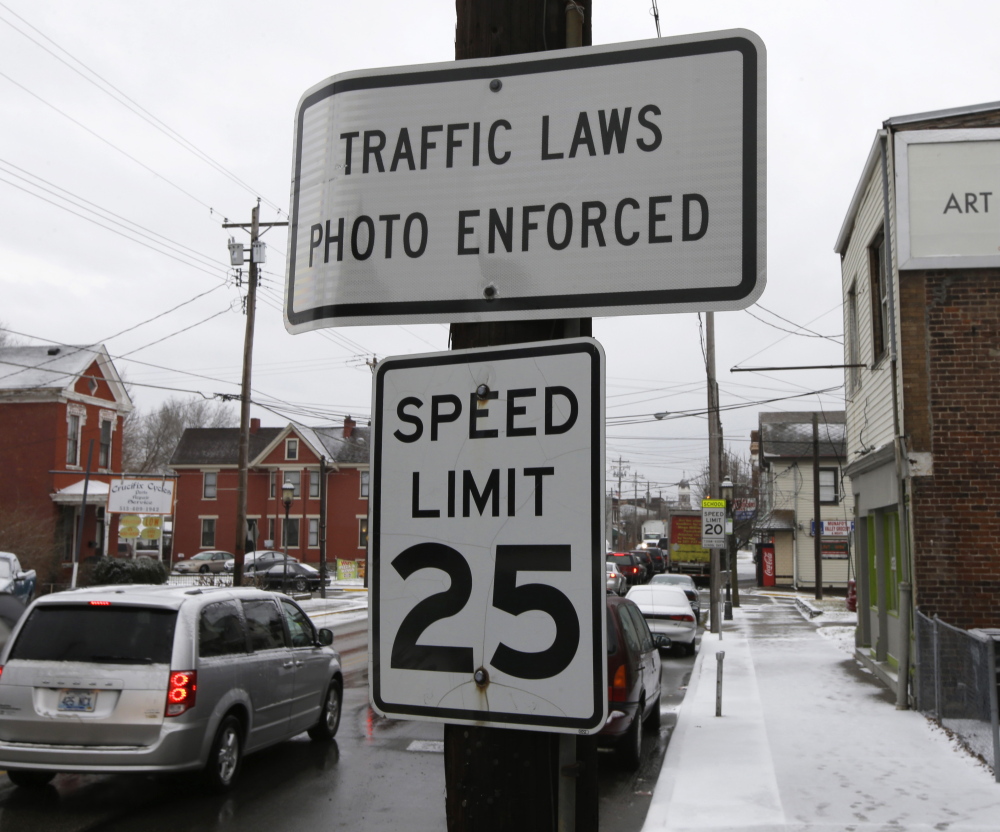ALBANY, N.Y. — Municipalities that installed traffic cameras to boost revenue are scraping for cash to fill budget gaps after complaints by drivers forced them to cancel their use.
Nassau County on Long Island ended its program after speed cameras led to the issuance of more than 400,000 tickets in less than two months, opening a $90 million budget hole over the next three years. In Ohio, Dayton is cutting in half its number of police cruisers, and Linden, New Jersey, is shelving plans to hire more cops after both states effectively ended camera systems after a backlash from motorists.
Cameras that monitor speed and red lights have become a quick way to raise revenue for cash-strapped U.S. local governments. While the programs are touted as a way to make roads safer, the perception among drivers is that municipalities are using cameras solely to pump up their coffers, said Ohio state Republican Sen. Bill Seitz, who has led his state’s charge against them.
“There’s some evidence that perhaps they do promote safety,” he said. But “the costs outweigh the benefits, and the revenue-enhancement feature of this predominates over safety.”
‘A POLITICAL LIABILITY’
Ohio, New Jersey and New York’s Nassau County moved to effectively end their camera programs this month, joining a national trend. Speed cameras are already banned in at least a dozen states, according to the Insurance Institute for Highway Safety. The number of red-light camera programs in the U.S. dropped to 469 this month from a high of 540 in 2012.
“They’re a political liability, but it’s an easy way to raise revenue without raising taxes,” said Howard Cure, head of municipal research at Evercore Wealth Management.
Still, relying on traffic cameras isn’t a long-term solution to revenue shortfalls because drivers eventually figure out where they are, Cure said.
In Nassau County, Republican County Executive Ed Mangano and legislators used the $30 million in projected annual revenue from speed cameras to help persuade a state control board to end a three-year wage freeze. Then the residents spoke up.
As many as 56 cameras positioned near schools led to 400,308 tickets in only two months, triggering an outcry.
“The program angered residents to a point where it was outweighing the improved safety,” said Cristina Brennan, a spokeswoman for Norma Gonsalves, who leads the Republican majority in the Nassau legislature.
COUNTY DRAWN TO ‘SHINY OBJECTS’
The county of about 1.4 million residents east of New York City was already facing a deficit of about $200 million – before the program ended.
“The cameras were one of the shiny objects the county seems perpetually attracted to,” said Chris Wright, a member of the control board who voted against lifting the wage freeze in May.
Mangano and the Republican majority in the legislature have agreed to make up the $30 million by increasing a surcharge on mobile phones for 911 service and ending a subsidy to a local hospital, among other measures, said Brian Nevin, a Mangano spokesman.
“While speeding motorists dislike tickets, it’s clear the program has changed driving habits for the better,” Mangano said in an e-mail.
From September, when the full program began, through November, the average number of tickets issued per day dropped 64 percent, according to a Dec. 11 report by the Nassau County Office of Legislative Budget Review.
In New Jersey, a five-year pilot program ended Dec. 16 after Republican Gov. Chris Christie opted not to renew it. Assemblyman Declan O’Scanlon, a vocal opponent, celebrated with a midnight party at the Brick House Tavern near a South Plainfield intersection that had been watched by cameras.
Programs in Ohio are ending after Republican Gov. John Kasich signed Seitz’s bill that requires posting a police officer by every camera.
Copy the Story LinkSend questions/comments to the editors.



Success. Please wait for the page to reload. If the page does not reload within 5 seconds, please refresh the page.
Enter your email and password to access comments.
Hi, to comment on stories you must . This profile is in addition to your subscription and website login.
Already have a commenting profile? .
Invalid username/password.
Please check your email to confirm and complete your registration.
Only subscribers are eligible to post comments. Please subscribe or login first for digital access. Here’s why.
Use the form below to reset your password. When you've submitted your account email, we will send an email with a reset code.